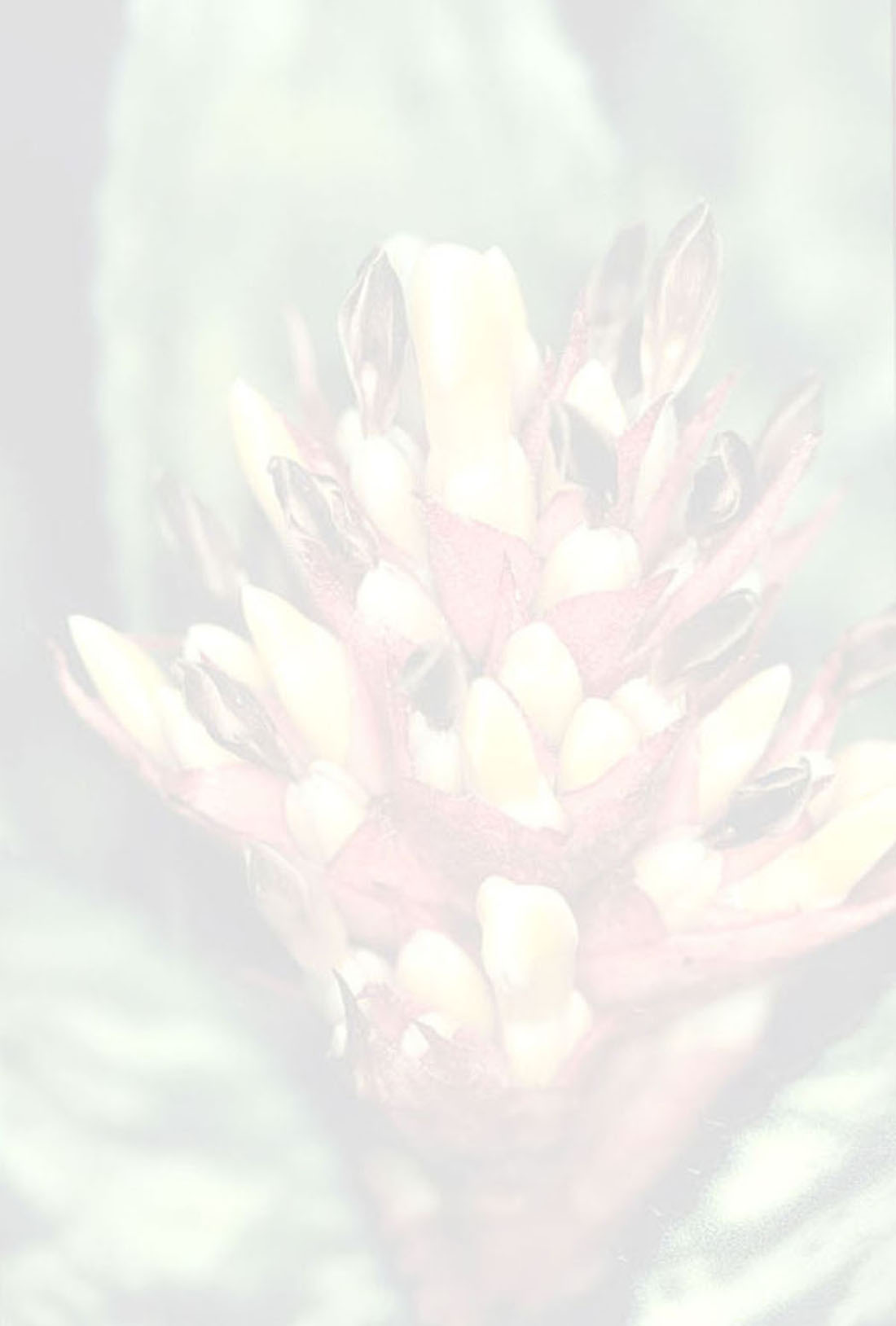


plant epiphytic 60–80 cm high (with inflorescence extended), propagating by short offsets at the base. leaves 15–20, rosulate, sub-erect to arched, chartaceous to fine leathery, forming a funnel shaped rosette at the base, sheaths elliptic to oblong elliptic, 11–13 x 7–9mm, dense with minute white scales, dark purple on the abaxial face, colour partially obscured by the trichomes, blades linear, 20–27 x 5.4–8 cm, green, sub-dense with inconspicuous whitescales on the abaxial face, inconspicuously white scaled to glabrescent on the adaxial face, inconspicuously narrowing toward the base, tip obtuse to truncate, distinctly apiculate, nearly black as well as the upper margins, densely spined, spines 1–2 mm long, 1–4 mm apart, narrow triangular, dark chestnut brown, straight or lightly retrorse, peduncle erect, slender, 26–28 cm long, 0.3–0.5 cm diam., sparsely white lanate to glabrescent, red, much shorter than the leaves, peduncle bracts narrow lanceolate, finely acuminate, 40–50 x 8–10mm, stramineous, purplish on the adaxial face, papyraceous to nerved, inconspicuously spined near the tip or entire, sparsely white lanate near the base to glabrescent, erect, shorter than or equalling the internodes, inflorescence paniculate, sparsely once-branched, sub-erect, 30–50 cm long, (with the terminal spike extended) rachis 3–5 mm diam., sub-angular, slightly flexuous, sparsely white woolly glabrous, red; primary bracts similar to the upper peduncle bracts, gradually getting smaller in the direction of the top, entire, membranaceous, sub-erect to spreading, sparsely white lanate, exceeding the stipes. inflorescence: branches lateral ones numbering 1–4, spreading recurved, 17–29 cm long, 2–2.5 cm diam., with 43–60 flowers, stipes slender, ebracteate, 15–25 x 2mm, slightly complanate, red, rachis slender, straight or almost, 1–1.5 mm diam., red, glabrous, slightly sulcate, terminal branch 30–40 cm long, spreading recurved, with 80–100 flowers, floral bracts narrow triangular, acuminate caudate spinescent, red, nerved, entire, glabrous, slightly shorter than the ovary, ecarinate, 4–5 x 2mm, flowers sessile, 17–20 mm long, not scented, sub-erect, sub-dense to densely disposed, almost uniformly distributed and slightly verticillate, sepals strongly asymmetric, with a membranaceous lateral wing, rounded and slightly exceeding the distal portion of the central nerve, nevertheless distinctly shorter than the apical mucron, ca 7.5 x 4 mm including the apical mucron about 2 mm long, connate at the base for about 0.5mm, red, ecarinate, glabrous. flowers: petals lanceolate to sub-spatulate, acuminate, 9–12 x 2–2.5mm, free, white, subspreading-recurved towards the tip at anthesis, with 2 appendages lacerate-digitate, 2.5–3 mm from the base, and with 2 callosities equalling the filaments. stamens: filament plump, white, antisepalous ones free, 8–9 mm long, antipetalous ones 7–8 mm long, adnate to petals for ca 3mm; anther ca 3 mm long, dorsifixed ? from the base, base obtuse, tip acuminate- caudate; pollen biporate, wide ellipsoid to subglobose, small pores, exina psillate, with longitudinal nerves. pistil: stigma conduplicate spiral, ellipsoid, lobes ca 1.5 mm long, green, subentire to short crenulate; ovary subcylindrical, 6–7 mm long, 2–3 mm diam., epigynous tube ca 1 mm long, placenta apical, ovules apiculate fruit not known.Edited from (29-03-2017): Siqueira & Leme 2007. (protologue) Fragments of the Atlantic Forest of Northeast Brazil - Biodiversity, Conservation and the Bromeliads .